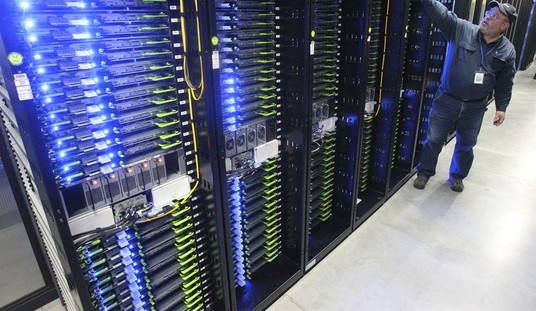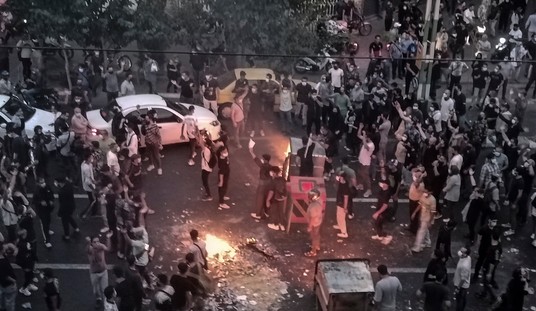The outbreak of war between Israel and the Hamas-run government of the Palestinian enclave in Gaza has pushed "X," the social media platform formerly known as Prince, I mean Twitter, to the forefront of news distribution. Some, however, claim that X is so overrun by misinformation that it is useless. Evidence, however, shows that this critique is driven by a dislike of the changes Elon Musk made to democratize X, laziness on the part of online and traditional media, and the inability of corporate media to control the narrative.
“This is the hardest time I’ve ever had covering a crisis on here. Credible links are now photos. On the ground news outlets struggle to reach audiences without an expensive blue check mark. Xenophobic goons are boosted by the platform’s CEO."https://t.co/PFCJ8RJpbn
— Ben Collins (@oneunderscore__) October 9, 2023
The article is behind a paywall, but you can read it here for free.
N THE WAKE of Hamas’ deadly attacks on Israel this weekend—and the Israeli military’s response—journalists, researchers, open source intelligence (OSINT) experts, and fact-checkers rushed to verify the deluge of raw video footage and images being shared online by people on the ground. But users of X (formerly Twitter) seeking information on the conflict faced a flood of disinformation.
While all major world events are now accompanied almost instantly by a deluge of disinformation aimed at controlling the narrative, the scale and speed at which disinformation was being seeded about the Israel-Hamas conflict is unprecedented—particularly on X.
The author blames Musk opening up X from being a middle school mean girls' club dominated by cheerleaders blue-check accounts to anyone willing to pay $8/month and submit proof they are actual people for the influx of bad information. A large percentage of the former elite blue-check accounts would have had trouble doing the latter part, proof of humanity. So instead of leftwing celebrities telling us what to believe, now we get to see what actual experts in the field have to offer.
“For many reasons, this is the hardest time I’ve ever had covering a crisis on here,” Justin Peden, an OSINT researcher from Alabama known online as the Intel Crab, posted on X. “Credible links are now photos. On the ground news outlets struggle to reach audiences without an expensive blue check mark. Xenophobic goons are boosted by the platform’s CEO. End times, folks.”
When Peden covered the escalation in Gaza in 2021, the sources he was seeing in his feed were from people on the ground or credible news agencies. This weekend, he says, verified content or primary sources were virtually impossible to find on X.“It’s getting incredibly hard to find people that actually live in Palestine or in southern Israel,” Peden tells WIRED. “It’s been incredibly hard to find their preliminary information and share their videos and photos. You have this perfect storm where on the ground, preliminary sources are not being amplified, especially those that maybe don’t speak English, which is a large majority of users in that area.”
This is the irony; actual OSINT accounts were never "verified" under the old system because most of them were sorta professional and not social media clout chasers. The problem this guy points to, and I follow him on my "Ukraine" reference list, is that he wants to be spoonfed. He's not willing to do the hard work of finding non-English speaking accounts that can be translated by a right-click in Google Chrome. The same accounts he allegedly followed in 2021 are still available. If your currency is accuracy and credibility, you take your time and verify information. If you want to be a YouTube commenter and yell, "First!!" you have a problem retaining your credibility.
In fact, the information that appears on X gets batted down pretty swiftly, even when it is an alleged news organization with a history of fabricating stories (Hilarious: Twitter’s Community Notes Gets the Last Laugh After NBC News Hit Piece on ‘X’ Is Tweeted Out). And X has a mechanism allowing false and misleading information to be flagged. Unlike the old system that decided you "couldn't handle the truth," X provides a feedback mechanism to challenge possible misinformation without some green-haired they/them character deciding it for you.
This is about controlling the narrative (As Hamas and Pro-Terror Media Lose Control of the Anti-Israel Narrative, Iran Denies Any Involvement).
Under the old regime, the horrific images coming out of Southern Israel would have been blocked by Twitter. We would not have seen Shani Louk stripped naked with her limbs either broken or dislocated and paraded around by Hamas animals in a truck. We would not have seen the bodies of dead Israeli citizens who had been slaughtered in their homes. Those images would have violated the rules about showing violent images (see Even This Weekend's Attack Can't Motivate Israel to Allow Citizens to Own Firearms). We would not have seen images of Palestinians calling for more murders. The high-profile accounts that sided with Hamas would have been safely silent because they would have known that calling for genocide would put their social media clout in danger.
What we would have seen plenty of would have been images from mainstream media, nearly all of whom are clearly sympathetic with Hamas's goals if not entirely aligned with the methods, showing Israeli bomb strikes in Gaza. That's why the EU censorship agency is up in arms.
Brussels has given Elon Musk until midnight to get a grip on the gruesome Hamas attack imagery flooding X — or face the full force of Europe's new social media rules.https://t.co/jwrQCKqKVX
— POLITICOEurope (@POLITICOEurope) October 11, 2023
It's no longer within their power to claim both sides are the same. Thanks to Elon Musk, we got to see both in real-time and decide for ourselves.
In short, disinformation aside, we got to see Hamas for what it was. The mainstream media doesn't like that because they can no longer push their Israel-bad-Palestine-good narrative.
One of the privileges of being a citizen is getting to evaluate information and form opinions without your information being "curated" by people with an agenda that may not be transparent.














Join the conversation as a VIP Member